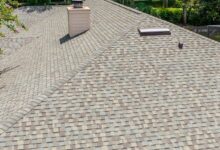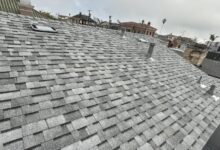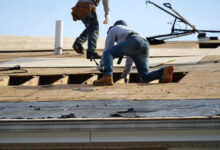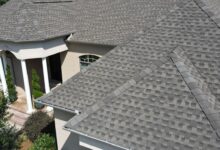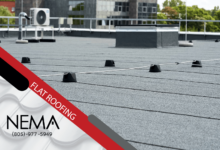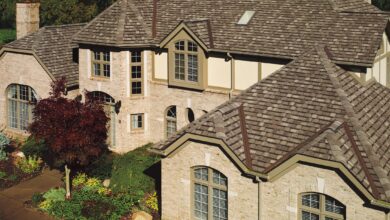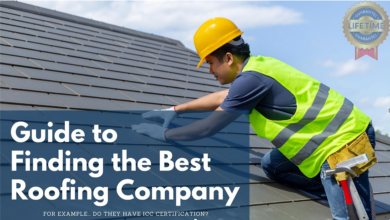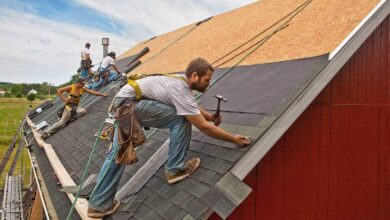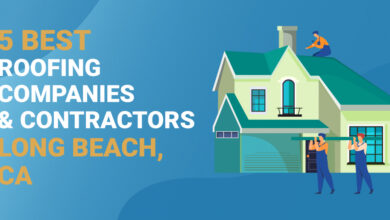Best Roof Repair Company: Finding the Right Fit
Best roof repair company selection requires careful consideration. Finding a reputable company involves more than just checking online reviews; it’s about understanding their expertise, pricing transparency, and commitment to customer service. This guide will help you navigate the process, ensuring you choose a company that delivers quality workmanship and peace of mind.
From understanding the nuances of different roofing materials and repair techniques to evaluating warranties and guarantees, we’ll explore the key factors to consider. We’ll also delve into how to identify red flags and avoid potential pitfalls, empowering you to make an informed decision that protects your investment.
Defining “Best” in Roof Repair
Choosing the “best” roof repair company isn’t simply about finding the cheapest option; it’s about identifying a company that delivers high-quality workmanship, excellent customer service, and lasting results. Consumers weigh several crucial factors to determine a company’s overall quality and reliability.
Factors Consumers Consider When Assessing Roof Repair Companies
Consumers primarily consider a company’s reputation, experience, licensing and insurance, warranty offerings, and pricing structure when evaluating roof repair services. A strong online presence with positive reviews significantly influences their decision-making process. The availability of transparent communication, clear pricing, and readily accessible contact information also contribute to their perception of a company’s professionalism and trustworthiness.
Customer Review Examples
Positive reviews often highlight aspects such as prompt and efficient service, skilled and courteous technicians, clear communication throughout the repair process, and a fair and transparent pricing structure. For example, one satisfied customer might comment: “From the initial consultation to the final cleanup, the team was professional, efficient, and answered all my questions patiently. The repair is flawless, and I highly recommend them!”
Conversely, negative reviews often cite issues such as poor communication, unprofessional behavior from technicians, hidden fees, shoddy workmanship leading to recurring problems, and difficulty in obtaining warranty service. A dissatisfied customer might write: “The work was rushed, the cleanup was inadequate, and I’ve already noticed leaks again just weeks after the repair. I wouldn’t recommend them to anyone.”
Hypothetical Scenario: Best vs. Average Company
Imagine two companies responding to a roof leak. The “best” company promptly assesses the damage, explains the repair process clearly, provides a detailed estimate, and completes the repair efficiently and to a high standard, offering a comprehensive warranty. They proactively address any concerns and maintain clear communication throughout. The “average” company, however, arrives late, provides a vague estimate, performs a rushed repair with substandard materials, and leaves behind a mess. They are unresponsive to follow-up questions and offer minimal warranty coverage. The difference in quality, professionalism, and long-term value is stark.
Comparison of High-Quality and Low-Quality Roof Repair Companies
| Feature | High-Quality Company | Low-Quality Company | Example |
|---|---|---|---|
| Licensing & Insurance | Fully licensed and insured, readily verifiable | Unlicensed or underinsured, lacks proof of insurance | Provides copies of licenses and insurance certificates vs. vague assurances |
| Workmanship | High-quality materials, meticulous attention to detail, adheres to industry best practices | Uses substandard materials, rushed work, visible imperfections | Clean, precise repairs vs. sloppy, uneven patching |
| Communication | Prompt responses, clear explanations, proactive updates | Unresponsive, unclear communication, difficult to reach | Regular updates via text and email vs. infrequent, unclear phone calls |
| Warranty | Comprehensive warranty covering materials and labor for an extended period | Minimal or no warranty, difficult to claim | 5-year warranty on materials and workmanship vs. no written warranty |
Company Reputation and Research
Choosing the right roof repair company involves more than just comparing prices. A company’s reputation is a crucial factor, reflecting their reliability, professionalism, and the quality of their work. Thorough research is essential to ensure you’re entrusting your home’s most important protective layer to a trustworthy and capable team.
Online reviews and ratings provide a valuable glimpse into a company’s past performance and customer satisfaction. However, it’s important to approach this information critically, as reviews can be manipulated or biased. Understanding how to interpret and verify these reviews is crucial in making an informed decision.
Online Review Verification
Determining the authenticity of online reviews requires a discerning eye. Look for reviews that provide specific details about the services rendered, timelines, and the overall experience. Generic, overly positive, or overly negative reviews should raise red flags. Pay attention to the consistency of reviews across different platforms like Google Reviews, Yelp, and the company’s own website. A significant disparity in ratings across platforms might suggest manipulation. Additionally, be wary of reviews that seem suspiciously similar or lack specific details. A large number of five-star reviews without any negative feedback whatsoever can be a warning sign. Consider the overall pattern and distribution of reviews – a balanced mix of positive and negative feedback with detailed explanations is generally more trustworthy.
Licensing and Insurance Verification
Verifying a company’s licensing and insurance is paramount for your protection. Unlicensed contractors may not adhere to safety standards or provide adequate warranties. Similarly, a lack of insurance could leave you financially responsible for accidents or damages that occur during the repair process. Most states require roofing contractors to be licensed. You can usually find this information on your state’s contractor licensing board website by searching for the company’s name. Checking for general liability and workers’ compensation insurance is equally important. This information may be available on the company’s website or by directly contacting them. Requesting proof of insurance is always a good practice.
Better Business Bureau (BBB) Rating Check
The Better Business Bureau (BBB) provides a valuable resource for assessing a company’s reputation. Follow these steps to check a company’s BBB rating:
- Visit the BBB website (bbb.org).
- Enter the company’s name and location in the search bar.
- Review the company’s profile, paying attention to its rating (A+ being the highest), length of accreditation, and any complaints filed against it.
- Examine the details of any complaints to understand their nature and the company’s response.
- Note the number of complaints relative to the company’s size and the time period covered.
Remember that a lack of complaints doesn’t guarantee perfect service, but a significant number of unresolved or negative complaints should raise concerns. The BBB rating serves as a helpful indicator, but it shouldn’t be the sole factor in your decision.
Services Offered and Expertise
Choosing the right roof repair company involves understanding the breadth and depth of their services. A truly “best” company possesses not only a strong reputation but also a diverse skill set capable of handling a wide range of roofing issues and materials. This expertise ensures efficient, effective, and long-lasting repairs.
Different roofing materials require specialized knowledge and techniques. Improper repair can lead to further damage, costly rework, and even safety hazards. The following details the types of repairs offered and the importance of specialized expertise for various roofing materials.
Types of Roof Repairs and Associated Expertise
The scope of roof repairs extends beyond simple patching. It encompasses a variety of tasks, each demanding a specific level of skill and understanding of different roofing materials. From minor leak repairs to extensive storm damage restoration, a comprehensive approach is essential for a durable and safe roof.
- Leak Repair: This common issue requires careful diagnosis to locate the source of the leak, often involving inspection of the entire roof system, including flashing, chimneys, and valleys. Expertise in identifying the cause, whether it’s a cracked shingle, damaged flashing, or a compromised underlayment, is crucial for a permanent fix.
- Shingle Replacement: This involves removing damaged shingles and replacing them with new ones, ensuring proper alignment and overlap for optimal weather protection. The expertise needed varies depending on the type of shingle (asphalt, wood, tile, slate) and the complexity of the roof design.
- Flashing Repair/Replacement: Flashing, the metal sheeting used around chimneys, vents, and valleys, is crucial for preventing leaks. Repairing or replacing damaged flashing requires meticulous work to ensure a watertight seal. This often involves specialized tools and knowledge of proper installation techniques for different metal types.
- Gutter and Downspout Repair/Replacement: Clogged or damaged gutters and downspouts can lead to water damage to the roof and foundation. Repair or replacement involves assessing the extent of damage, cleaning out debris, and potentially replacing sections or the entire system.
- Roof Ventilation Repair: Proper ventilation is essential for preventing moisture buildup and extending the life of the roof. Repairing or installing new ventilation components requires an understanding of airflow dynamics and the different types of ventilation systems.
Specialized Expertise for Various Roofing Materials
The materials used in roofing construction greatly influence the repair techniques. Each material presents unique challenges and requires specific expertise to handle effectively.
- Asphalt Shingles: The most common roofing material, asphalt shingles require expertise in identifying and repairing various types of damage, including cracks, curling, and granule loss. Proper shingle replacement techniques are crucial for a long-lasting repair.
- Tile Roofing: Tile roofs, known for their durability, require specialized skills in handling fragile tiles and ensuring proper mortar application. Repairing cracked or broken tiles often involves intricate matching and precise installation.
- Slate Roofing: Slate roofs are highly durable but require specialized expertise due to the weight and fragility of the slate tiles. Repairing a slate roof often involves custom cutting and precise fitting of replacement tiles.
- Metal Roofing: Metal roofs, such as those made of aluminum or steel, require expertise in working with metal sheets and seams. Repairing damaged panels or seams often involves specialized tools and techniques for ensuring watertight seals.
- Wood Shingles/Shakes: Wood roofing requires expertise in handling the natural variations of wood and ensuring proper treatment to prevent rot and insect damage. Repairing wood shingles often involves replacing damaged pieces and ensuring proper ventilation.
Examples of Situations Requiring Specialized Expertise
Consider a scenario where a leak occurs near a chimney on a tile roof. A general contractor might attempt a simple patch, but a specialized roofing contractor would understand the complexities of flashing around chimneys and the specific techniques required for tile repair to prevent future leaks. Similarly, repairing a damaged section of a standing-seam metal roof necessitates expertise in working with metal sheets and ensuring a watertight seal. Incorrect repair could lead to significant water damage and costly repairs.
Pricing and Transparency
Choosing a roofing company involves careful consideration of not only their expertise but also their pricing structure and transparency. A reputable company will provide clear, detailed quotes that leave no room for surprises. Understanding how different companies price their services and how to identify potential hidden costs is crucial for making an informed decision.
Pricing structures for roof repairs vary considerably. Some companies use a fixed price for specific repairs, while others may opt for hourly rates or a combination of both. A project-based pricing model might be used for larger repairs, offering a single price for the entire job. It’s also important to be aware that some companies may charge extra for materials, while others include materials in their quoted price. The method used can significantly impact the final cost, highlighting the importance of thorough comparison shopping.
Different Pricing Structures in Roof Repair
Roofing companies employ various pricing methods. Fixed-price contracts offer a set cost for a defined scope of work, providing predictability. Hourly rates offer flexibility for unforeseen issues but can lead to higher costs if the repair takes longer than anticipated. Some companies use a combination of both, charging a fixed price for certain aspects and an hourly rate for others. Material costs may be included in the price or listed separately. Understanding the pricing model before committing is essential.
Importance of Detailed Quotes and Itemized Costs
A detailed quote is paramount for ensuring transparency and avoiding unexpected expenses. A comprehensive quote should list all materials, labor costs, permits (if applicable), and any additional fees. Itemized costs allow for easy comparison between different quotes, ensuring you’re paying a fair price for the work involved. A lack of detail in a quote should raise concerns, suggesting a potential for hidden costs or less-than-transparent business practices.
Identifying Hidden Fees or Unexpected Costs
Hidden fees can significantly inflate the final cost of a roof repair. Look for vague terms in quotes, such as “additional charges” or “contingency fees,” which lack specific details. Inquire about the possibility of unexpected costs due to underlying issues discovered during the repair process. A reputable company will thoroughly inspect the roof and provide an accurate estimate upfront, minimizing the likelihood of surprise charges. Compare multiple quotes to identify any significant discrepancies in pricing, which may indicate hidden fees in one or more estimates.
Sample Roof Repair Quote
| Item | Description | Quantity | Unit Cost | Total Cost |
|---|---|---|---|---|
| Inspection | Initial roof assessment | 1 | $150 | $150 |
| Materials | Shingles (Type A) | 10 squares | $45/square | $450 |
| Labor | Shingle replacement | 8 hours | $75/hour | $600 |
| Permits | City building permit | 1 | $100 | $100 |
| Clean-up | Removal of debris | 1 | $50 | $50 |
| Subtotal | $1350 | |||
| Sales Tax (6%) | $81 | |||
| Total | $1431 |
Note: This is a sample quote and actual costs may vary depending on location, materials used, and the complexity of the repair.
Customer Service and Communication
Exceptional customer service is paramount for any roof repair company aiming for “best” status. It’s not just about fixing roofs; it’s about building trust and ensuring client satisfaction throughout the entire process. Open, proactive communication fosters positive relationships and minimizes potential misunderstandings.
Effective communication involves multiple touchpoints, from initial contact to project completion. A company should strive for clear, concise, and timely responses to all inquiries, regardless of the communication channel (phone, email, or online messaging). Providing regular updates on project progress, explaining any unforeseen delays or challenges transparently, and actively seeking client feedback are all crucial aspects of building strong customer relationships.
Ideal Communication Practices
Ideal communication practices involve a multi-faceted approach. Prompt responses to initial inquiries are essential, often within 24 hours. This initial contact should be friendly and professional, establishing a positive rapport. Following up after the initial contact to schedule an inspection is a sign of good customer service. During the inspection, the roofing professional should clearly explain the problem, potential solutions, and associated costs. Regular updates throughout the repair process, whether via phone calls, emails, or text messages, keep clients informed and reduce anxiety. Finally, post-repair follow-up ensures client satisfaction and allows for addressing any lingering concerns.
Examples of Excellent and Poor Customer Service
An example of excellent customer service would be a company that not only promptly responds to calls and emails but also proactively sends updates on the project timeline. They might send photos of the repair progress, explain any unforeseen complications in a clear and understandable manner, and promptly address any client concerns. In contrast, poor customer service might involve long wait times for responses, unclear or inconsistent communication, a lack of updates, and difficulty reaching someone to address problems. A company that fails to return calls or leaves clients in the dark about project delays demonstrates a lack of professionalism and respect for its clients.
Characteristics of a Responsive and Professional Company
A responsive and professional company is characterized by its proactive communication, readily available customer support, and commitment to resolving issues quickly and efficiently. This includes clearly defined communication channels, consistent updates, and a willingness to listen to and address client concerns. Professionalism extends to courteous and respectful interactions, regardless of the situation. A commitment to transparency, including upfront pricing and detailed explanations of the repair process, builds trust and confidence. Responsiveness also means acknowledging and addressing any negative feedback constructively.
Scenario Illustrating Effective Communication
Imagine Mrs. Jones needs roof repair. After contacting the company, she receives a prompt email acknowledging her inquiry and scheduling a free inspection within 48 hours. The inspector arrives on time, thoroughly assesses the roof, explains the damage clearly, and provides a detailed estimate with a breakdown of costs. Mrs. Jones approves the work. The company sends regular updates, including photos, via email and text messages throughout the repair process. Any minor delays are explained and justified. Upon completion, the company follows up with a satisfaction survey and offers a warranty. This proactive and transparent communication builds trust and ensures a positive experience for Mrs. Jones.
Warranty and Guarantees
A robust warranty is a critical component of choosing a reputable roof repair company. It demonstrates the company’s confidence in its workmanship and materials, offering you peace of mind and protection against unforeseen issues. Understanding the nuances of different warranty types and their terms is essential for making an informed decision.
Warranties and guarantees provide crucial legal protection for homeowners, ensuring that repairs are completed to a satisfactory standard and that any defects are addressed without additional cost. The absence of a comprehensive warranty should raise concerns about the company’s reliability and commitment to its work.
Types of Roofing Warranties
Roofing companies typically offer several types of warranties, each covering different aspects of the repair. A clear understanding of these distinctions is vital for comparing offers and choosing the best option for your needs.
- Manufacturer’s Warranty: This warranty covers defects in the roofing materials themselves, such as shingles, underlayment, or flashing. It’s usually provided by the manufacturer and is separate from the contractor’s warranty. The length and coverage vary depending on the material and manufacturer.
- Workmanship Warranty: This warranty covers the quality of the contractor’s labor. It protects against defects resulting from poor installation or improper techniques. The duration of this warranty can vary significantly between companies, ranging from a few years to a decade or more.
- Combined Warranty: Some companies offer a combined warranty that encompasses both materials and workmanship. This simplifies the process of making a claim, as you deal with a single entity for all warranty-related issues.
Understanding Warranty Terms and Conditions
It is crucial to thoroughly review the terms and conditions of any warranty before signing a contract. Pay close attention to the following aspects:
- Warranty Period: Note the specific duration of the warranty coverage, as this can vary significantly.
- Covered Defects: Clearly understand what defects are covered under the warranty. Some warranties may exclude certain types of damage, such as those caused by severe weather events.
- Exclusions: Pay attention to any exclusions or limitations stated in the warranty. These might include damage caused by acts of God, neglect, or improper maintenance.
- Claim Process: Understand the procedure for filing a warranty claim. This usually involves notifying the company of the issue and providing documentation, such as photographs or videos.
Example of a Comprehensive Warranty Agreement
This warranty covers all materials and workmanship provided by [Company Name] for the roof repair completed on [Date] at [Address]. The warranty period is [Number] years from the completion date. This warranty covers defects in materials and workmanship, excluding damage caused by acts of God (e.g., hurricanes, tornadoes, earthquakes), neglect, or improper maintenance. To file a claim, contact [Company Name] at [Phone Number] or [Email Address] within [Number] days of discovering the defect. [Company Name] reserves the right to inspect the damage before authorizing any repairs under this warranty.
Visual Representation of a Successful Roof Repair
A high-quality roof repair is more than just patching a hole; it’s a testament to meticulous craftsmanship and the use of premium materials. The visual outcome should reflect a seamless integration of the repair with the existing roof, showcasing durability and longevity. A successful repair is practically invisible to the untrained eye, blending seamlessly with the surrounding roofing system.
The visual aspects of a properly executed roof repair are multifaceted, encompassing material selection, application techniques, and the final aesthetic presentation. A keen eye can discern the difference between a hastily performed repair and one completed by experienced professionals committed to excellence.
Material Selection and Matching
Choosing the right materials is paramount. The replacement shingles or patching materials should precisely match the existing roofing material in color, texture, and composition. For example, using a slightly different shade of asphalt shingle, even if seemingly minor, will create an unsightly and noticeable patch. Similarly, using a cheaper, inferior material will result in a visible difference in texture and potentially lead to premature deterioration of the repaired area. A successful repair utilizes materials sourced from reputable manufacturers and specifically selected to blend seamlessly with the existing roof. This ensures uniformity and avoids the “patchwork” appearance often associated with poorly executed repairs.
Application Techniques and Neatness
The application process itself is crucial to the visual success of a repair. Proper techniques involve precise cutting, careful placement, and secure fastening of replacement materials. The repaired area should be free of gaps, overlaps, or loose materials. Neatness is key; stray nails, exposed underlayment, or uneven shingle alignment are telltale signs of substandard work. A professionally executed repair will exhibit clean lines, precise cuts, and an overall smooth, even surface. The edges of the repair should be seamlessly integrated with the surrounding roofing, eliminating any abrupt transitions or visible seams.
Proper Sealing and Water Resistance
Proper sealing is paramount for the long-term success and visual integrity of the repair. All seams and joints should be thoroughly sealed using high-quality roofing cement or sealant, ensuring a watertight barrier. The sealant should be applied neatly and evenly, without excessive globs or runs that can detract from the overall appearance. A successful repair will not only look good but also perform its intended function – protecting the roof from water damage. Visible signs of sealant failure or water intrusion are indicative of poor workmanship and a compromised repair. The finished product should show no evidence of leakage or water staining, further demonstrating the effectiveness of the sealing process.
Finished Product: A Seamless Integration
The ultimate visual representation of a successful roof repair is a finished product that is virtually indistinguishable from the rest of the roof. The repaired area should be completely integrated, showing no signs of previous damage or repair. The overall appearance should be uniform in color, texture, and consistency. From a distance, the repaired section should be invisible; only a close inspection by a trained professional should reveal the location of the repair. This seamless integration speaks volumes about the skill and precision of the roofing contractor.
Concluding Remarks
Choosing the best roof repair company is a crucial decision impacting your home’s safety and value. By carefully considering factors like reputation, expertise, pricing, and customer service, you can confidently select a contractor who will deliver exceptional results. Remember to thoroughly research potential companies, ask questions, and compare quotes before making your final choice. A well-maintained roof is a significant investment, and choosing the right partner for the job will ensure lasting protection for years to come.

